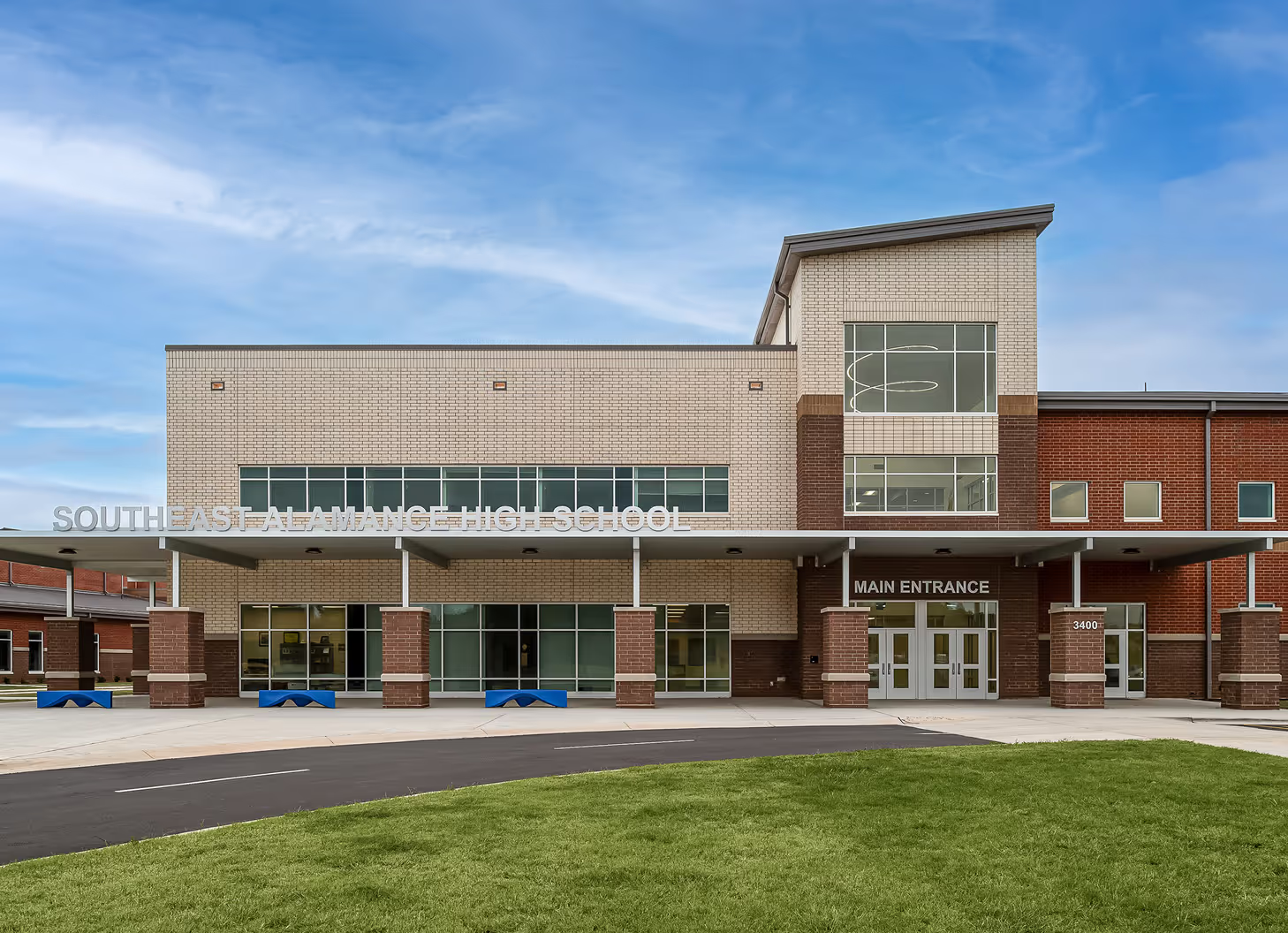
Seneca Valley High School
In Germantown, Maryland, Montgomery County Public Schools (MCPS) needed to replace their aging Seneca Valley High School without disrupting classes. Working with Moseley, the project team tackled significant engineering hurdles: a 65-foot grade change across the 29.3-acre site, limited buildable area due to existing utilities, and construction parameters requiring the new structure to rise just 20 feet from occupied classrooms.
Architectural Configuration
The building's massing responds to both site topography and programmatic requirements. A four-story academic wing houses core classroom spaces and administrative functions, while a separate volume contains large-format spaces including the 900-seat auditorium, dining area, and gymnasiums. These two primary volumes connect via a central spine that serves multiple functions: circulation pathway, after-hours entrance, and program showcase. This connector displays technology labs, the TV studio, media center, and community wellness center.
Designing Within Constraints
The five-story design maximized limited ground area while preserving essential utility infrastructure. This vertical configuration addressed the steep grade change while maintaining necessary clearances from existing systems.
Technical Education
Midway through planning, MCPS added a regional career and technical education (CTE) center to serve multiple high schools across northern Montgomery County. The first-floor wing incorporates 14 programs, each with distinct requirements.
The automotive program features a four-bay garage with industry-grade equipment adjacent to classrooms. In the construction laboratory, a convertible glass door transforms into an awning, extending work areas outdoors. This configuration enhances material handling capabilities and provides authentic construction site conditions for student training.
Construction Sequencing
A precise construction sequence began with utility relocation, allowing both buildings to function during the transition period. Classes continued uninterrupted as construction progressed next door. The project team expedited stadium completion, opening athletic fields 18 months before the main building. This approach preserved sports programming and aligned with specific community priorities.





Phase one of construction
Phase two of construction
Completed site
High Performance
LEED Silver certification reflects multiple sustainable elements. The vegetated roof manages stormwater and reduces heat gain while serving as an environmental science teaching resource.
Results
By addressing each site constraint methodically, the project team created a high-performing educational environment. The completed building demonstrates how precise engineering and architectural approaches resolve complex challenges while supporting diverse educational requirements. This facility serves its core mission: providing Montgomery County students, teachers, and residents with an educational center matched to their specific needs.























